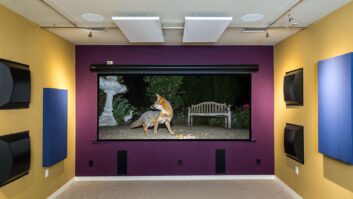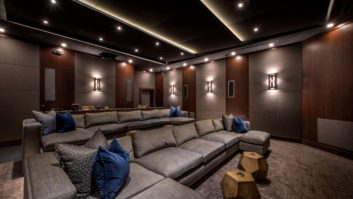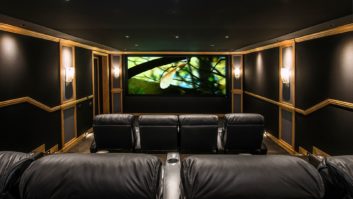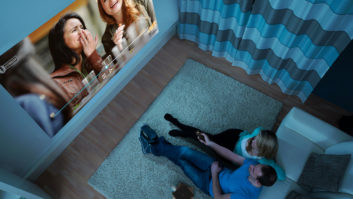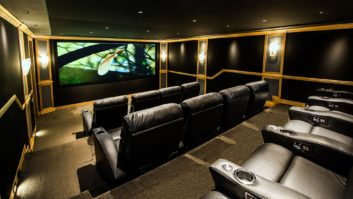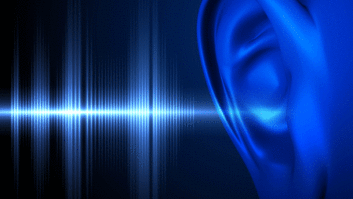A great home theater experience can practically pull you into a movie. Unfortunately, un-calibrated audio and shortcomings of your room often make it difficult to achieve this suspension of disbelief. A few simple adjustments, however, will help you achieve the best audio possible and grow your business offerings as well.
Great Soundstage Imaging
Focused soundstage imaging gives movie audio a direction of origination that correctly matches the scene and centers dialog. Good soundstage imaging requires proper polarity speakers, calibrated speaker levels and time, and minimal early reflections.
Proper speaker polarity connects the positive amplifier output to the positive speaker terminal and negative output to the negative terminal. This connection insures the loudspeaker cone(s) move inward and output at the same time (same polarity). Improper polarity, such as a reversed front center speaker connection, moves the sound origination to the sides. A reversed polarity rear speaker causes front-to-rear audio pans (e.g. flyovers) to lose direction. A speaker polarity test may be used to uncover human connection errors and hidden connection problems within the speaker cabinet.
Loudspeaker loudness can vary due to amplifier and speaker differences. The human ear/brain uses loudness to localize sound. If the center loudspeaker is louder, the soundstage collapses and all sounds come mainly from the center. If the right loudspeaker is louder, all sounds originate mainly from the right. AV receivers/processors have internal setup adjustments so speaker output levels can be matched. An SPL meter, with a C-weighted filter and slow averaging, measures the level of pink noise from each speaker at the listening position. Individual loudspeaker levels are adjusted until all speakers have similar SPL readings.
The human ear/brain also uses sound that it hears first, for localization. Because distances from speakers to listener vary, sounds reach the listener at different times. If the center loudspeaker sounds arrive first at the listening position, sounds that should originate from the far left or right come from nearer the center. AV receivers/processors also have speaker distance/time setup adjustments that enable delay to be adjusted.
An energy time graph (ETG) is used to measure sound arrival time/distance from each speaker to the listening position. The individual speaker delays/distances are adjusted until the ETG readings (measured time delays) from each speaker closely match.
Direct sounds travel from the loudspeaker to the listeners ears.
Other sounds reflect off nearby surfaces, reaching the listeners ears within about 10 ms later (early reflections). Early strong reflections off the sidewalls, from the left and right channel speakers, dramatically shift our perception of where the sound originates, if the reflected sound is not 10 dB quieter than the direct sound. An Energy Time Graph (ETG) test charts sound as it decays and is used to analyze early reflections during the 10ms time following the initial sound arrival. Early reflection points can be treated with curtains, wall hangings, or acoustic materials, to realize 10dB of attenuation as observed on the ETG.
Smooth Frequency Response
A smooth frequency response accurately reproduces all the movie sound frequencies at proper levels to the listener. The subwoofer must produce low frequencies at the same level as higher frequencies from the main speakers. A Real Time Analyzer (RTA) should be used to adjust the sub level. An RTA shows energy in octave or 1/3-octave bands as a graph from 20Hz to 20kHz. Use a surround sound signal to the processor with 20Hz to 20kHz pink noise to all speakers (e.g. Sencore DAG5161). Adjust the average subwoofer sound level to match the levels noted around 1 kHz on the RTA.
Analyze the frequency response at the crossover frequency (typically 80Hz) adjust polarity/phase controls on the subwoofer, or subwoofer distance, to smooth out the response. If you are unable to smooth out a dip, select a higher crossover frequency, and/or disable the crossover circuit in the subwoofer.
Jeff Murray ([email protected]) is product sales and marketing manager for Sencore, in Sioux Falls, South Dakota.
